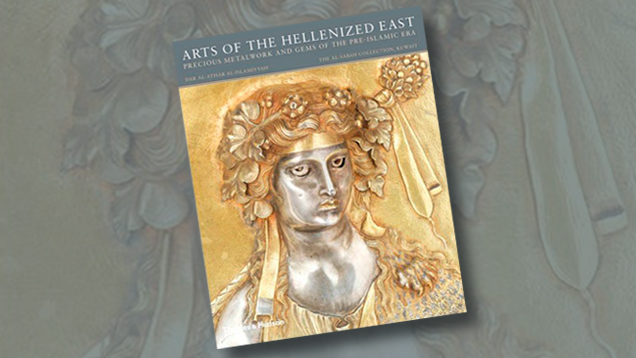Book Review: Arts of the Hellenized East: Precious Metalwork and Gems of the Pre-Islamic Era
May 27, 2016

The Hellenistic period refers to the era between the death of Alexander the Great in 323 BC and the rise of ancient Rome circa 30 BC. The spread of Greek culture through Alexander’s invasion of eastern lands, from the Mediterranean basin to modern-day Pakistan, influenced many indigenous cultures of these regions and left a significant mark on the region’s history, arts, science, and literature.
The al-Sabah Collection in Kuwait contains western and central Asian artifacts from the Bronze Age through late antiquity, including the Hellenistic period. Martha Carter concentrated her research on the Hellenistic silverwork and wrote Arts of the Hellenized East: Precious Metalwork and Gems of the Pre-Islamic Era, the sixth volume in the al-Sabah Collection series, with contributions from Prudence O. Harper and Pieter Meyers. The authors provide detailed descriptions for each item within the cultural and historical context of the era and the regions. The 400-page publication is further enhanced by 350 color images illustrating the objects. It is noteworthy that quite a few rare and important objects in the collection are documented for the first time.
There are more than 400 objects of Hellenistic silverwork in the collection. These include bowls, drinking vessels, and dishes made out of precious metals, mainly gilded silver. Of the hundreds of objects in the catalogue, only nine items contain gemstones, four of which are royal seals and intaglios carved out of carnelian, chalcedony, and garnet. Two bowls and two small cups, both of gilded silver, are inlaid with red garnets. A Buddhist gold reliquary set with red garnets and a blue sapphire is created from sheets of gold. There are two garnets remaining in their original bezel setting along with another unidentified stone (recorded as coral or glass); however, the author indicates that the blue sapphire bead on the lid of the casket was a later addition. Nevertheless, the object stands out as unusual piece from a gemological point of view.
This volume starts with a brief account of the ancient cultures of the region given within the context of their art traditions and perception of silverware at the time. Objects made from precious metals were favored for both their monetary value and their utility. The value of silverware was simply measured by its silver coin weight. Some researchers suggest that this was an important feature, as use of coinage was not extensive and silverware might have served as large denominational banknotes. The introduction concludes with a summary of the socio-political setting for eastern Hellenistic metalwork.
The catalogue is followed by a chapter on technical examination of some of the silver objects in the catalogue by Dr. Meyer. In the acknowledgment, Dr. Carter conveys her efforts to authenticate the provenance of certain objects in the collection, as most are from politically unstable regions such as Afghanistan, where systematic excavations are almost impossible. She combines her stylistic expertise with Dr. Meyer’s metallographic analyses to verify the origin of objects found by individuals rather than experts. His scientific insight to the ancient silver sources, production, and the metal’s importance as a commodity is a wonderful source to the reader. The chapter gives a clear explanation on modern analytical techniques to determine method of manufacture, condition, ancient and modern repairs, and authenticity in the collection.
The last chapter on ancient silver cleaning and conservation is an informative piece to the ancient art collectors, as it reveals the importance of stopping decay on ancient metalwork, especially while on display.
Ancient art collectors, art historians, appraisers, and jewelers alike would highly benefit from this volume. Arts of the Hellenized East: Precious Metalwork and Gems of the Pre-Islamic Era is a masterfully written, rare catalogue full of informative chapters on Hellenistic art and metal work technology.
Cigdem Lule is a research gemologist and mineralogist who specializes in the identification of geologic and geographic origin of ancient gem specimens through modern techniques.



